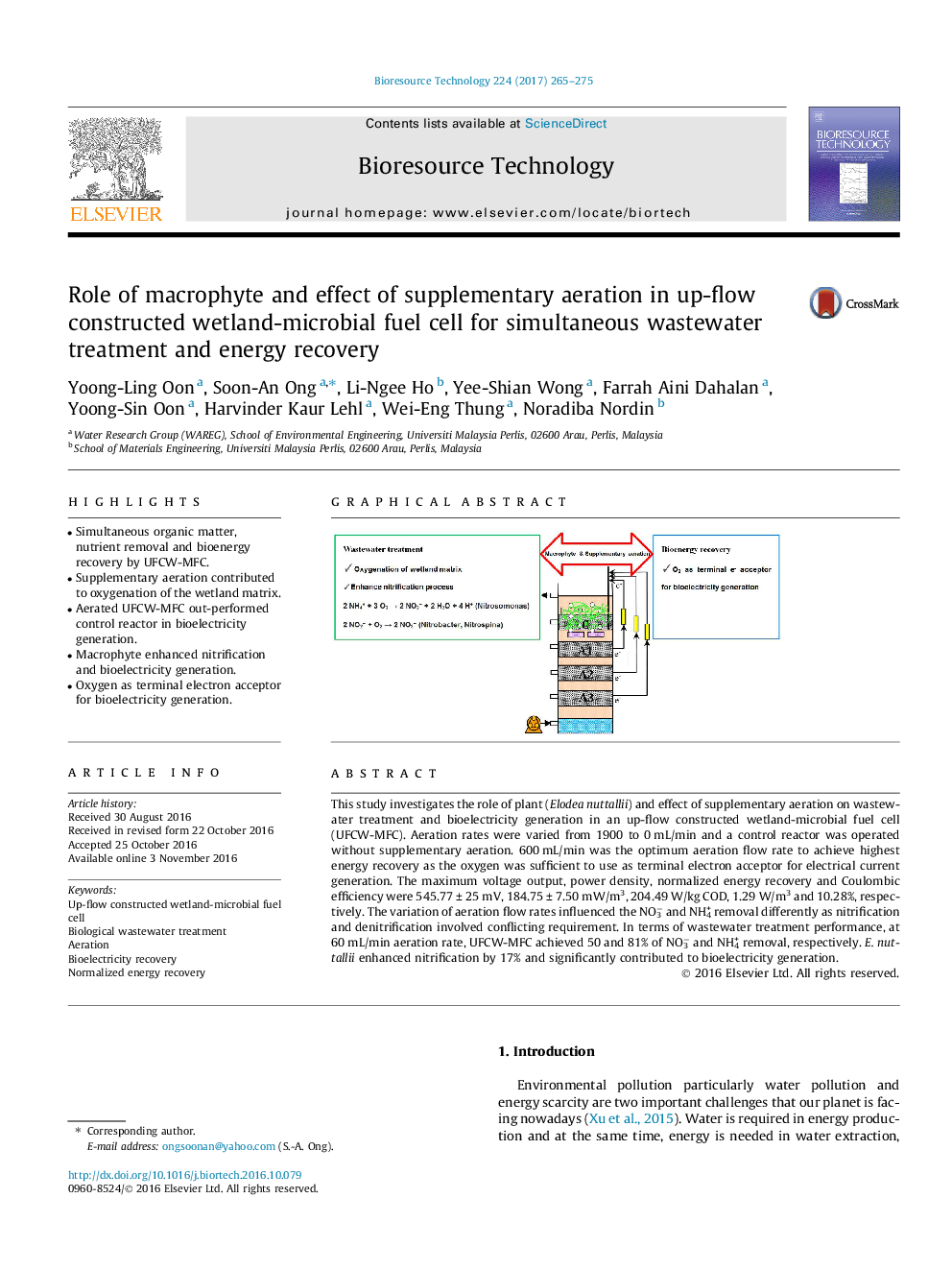| کد مقاله | کد نشریه | سال انتشار | مقاله انگلیسی | نسخه تمام متن |
|---|---|---|---|---|
| 4997842 | 1459919 | 2017 | 11 صفحه PDF | دانلود رایگان |
- Simultaneous organic matter, nutrient removal and bioenergy recovery by UFCW-MFC.
- Supplementary aeration contributed to oxygenation of the wetland matrix.
- Aerated UFCW-MFC out-performed control reactor in bioelectricity generation.
- Macrophyte enhanced nitrification and bioelectricity generation.
- Oxygen as terminal electron acceptor for bioelectricity generation.
This study investigates the role of plant (Elodea nuttallii) and effect of supplementary aeration on wastewater treatment and bioelectricity generation in an up-flow constructed wetland-microbial fuel cell (UFCW-MFC). Aeration rates were varied from 1900 to 0 mL/min and a control reactor was operated without supplementary aeration. 600 mL/min was the optimum aeration flow rate to achieve highest energy recovery as the oxygen was sufficient to use as terminal electron acceptor for electrical current generation. The maximum voltage output, power density, normalized energy recovery and Coulombic efficiency were 545.77 ± 25 mV, 184.75 ± 7.50 mW/m3, 204.49 W/kg COD, 1.29 W/m3 and 10.28%, respectively. The variation of aeration flow rates influenced the NO3â and NH4+ removal differently as nitrification and denitrification involved conflicting requirement. In terms of wastewater treatment performance, at 60 mL/min aeration rate, UFCW-MFC achieved 50 and 81% of NO3â and NH4+ removal, respectively. E. nuttallii enhanced nitrification by 17% and significantly contributed to bioelectricity generation.
196
Journal: Bioresource Technology - Volume 224, January 2017, Pages 265-275
